Rock’n’hole: the awe-inspiring Martinsloch sun phenomenon
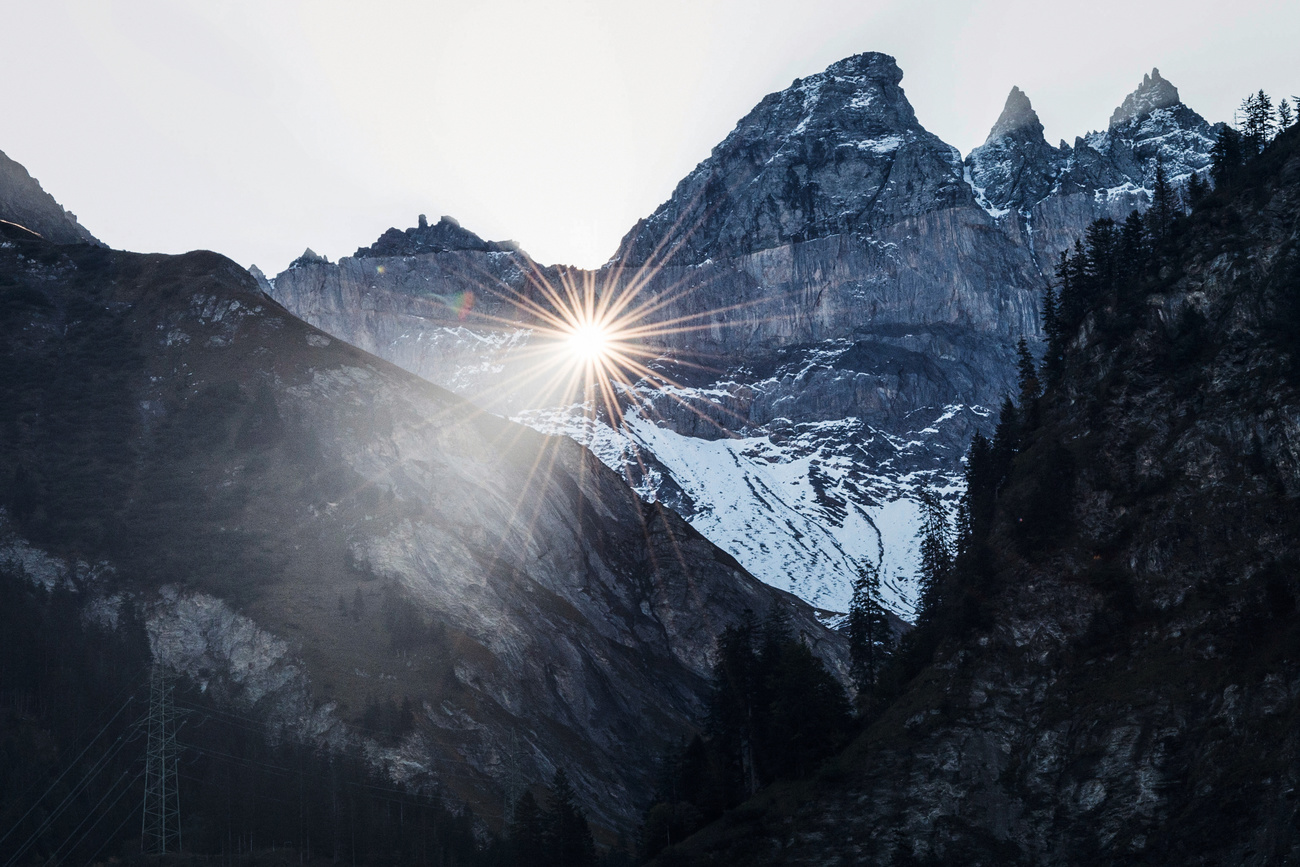
Twice a year the sun bursts through a hole in a mountain in eastern Switzerland and, like a giant spotlight, briefly illuminates the church in the village of Elm. The Martinsloch (Martin’s Hole) excites not only geologists and photographers but also local businesses.
“It’s a magical spectacle when the sun casts its rays through the Martinsloch onto the tower of the late Gothic church in Glarus shortly before the actual sunrise,” says the tourist office for ElmExternal link. “The event only lasts about five minutes, then the sun disappears, only to finally rise over the Tschingelhörner shortly afterwards.”
The Tschingelhörner is a chain of mountain peaks on the border of cantons Glarus and Graubünden. It is part of the UNESCO World Heritage Site “Swiss Tectonic Arena SardonaExternal link”, where rock layers around 280 million years old pushed themselves up over younger rock layers.
Elm, a pretty village of about 600 people (and birthplace and home of ski legend Vreni Schneider), is on the Glarus side of this geological jackpot. The Alpine scenery is popular with hikers and skiers, but twice a year – in spring and autumn – Elm rolls out the welcome mat for visitors keen to witness an unforgettable natural phenomenon.
Over eight days – weather permitting – the sun briefly shines through the Martinsloch, a triangular rock window 22 metres high and 19 metres wide, and lights up various locations in Elm (it actually shines through the rock window for more than a month, but you’ll have to go outside the village to see it). However, it’s the two mornings when the sun hits the church in the main square that gets everyone the most excited.
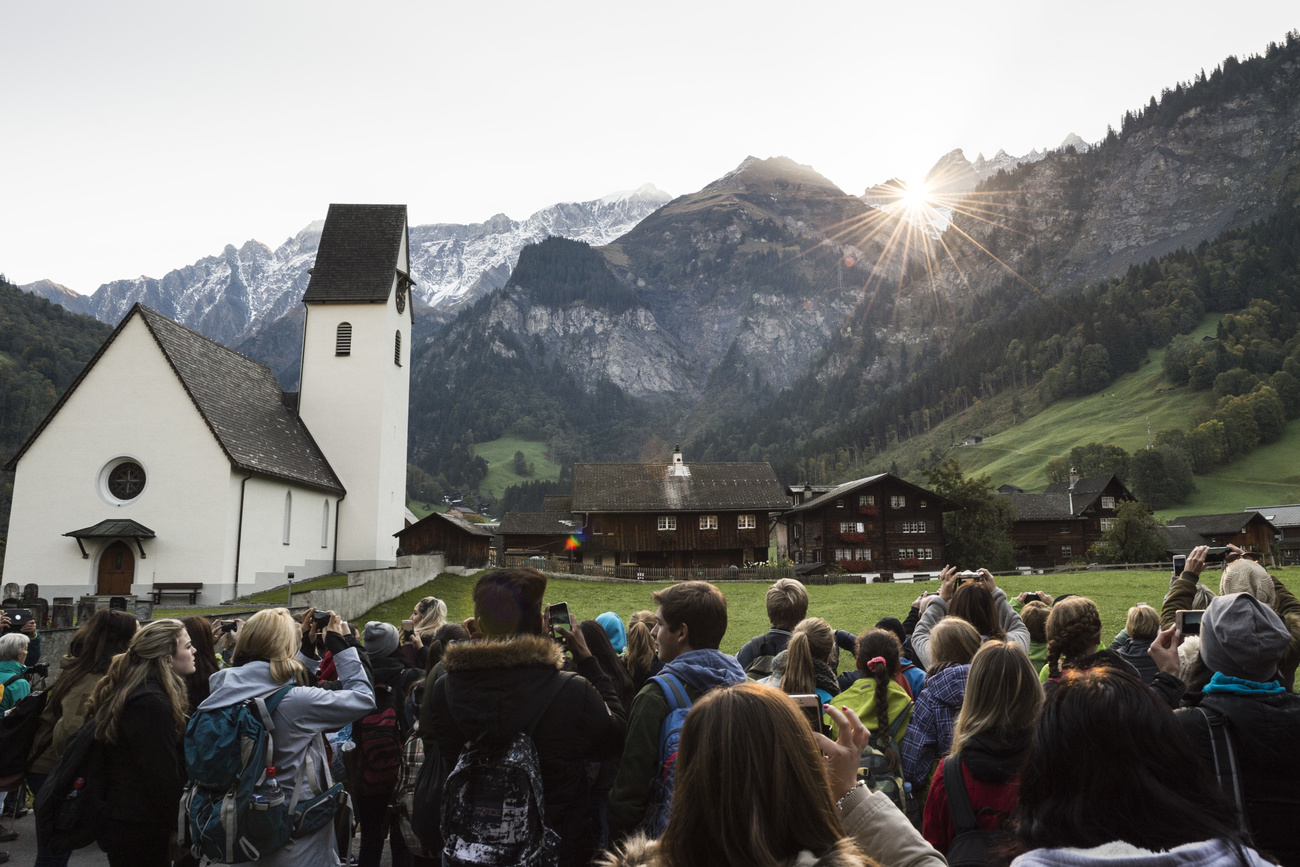
This year, this happened on March 12 and 13 at exactly 8.53am and 8.50am respectively. It will (hopefully) be repeated on September 29 and 30, at 9.29am and 9.32am.
If it’s a bit hazy, a 4.7km sunbeam casts a circle of light about 50 metres wide onto Elm, moving across the village at about 32cm per second.
>> This video will help you get your bearings:
Elm tourism explains where and whenExternal link the sun can be seen through the Martinsloch, with locations including various hotels, Vreni Schneider Sport and, of course, the main square. All the prime viewing locations are marked, and experts are on hand to give “exciting explanations”.
Light meal
Local businesses certainly know a good opportunity when they see it. Regional specialities – beer, cheese, meat, cakes – are offered on stands, and the Hotel Elmer even has a “sun event package”, including a room with a balcony facing the mountain and a “three-course Martinsloch menu”. British delicacy toad in the holeExternal link should, but probably won’t, be served.
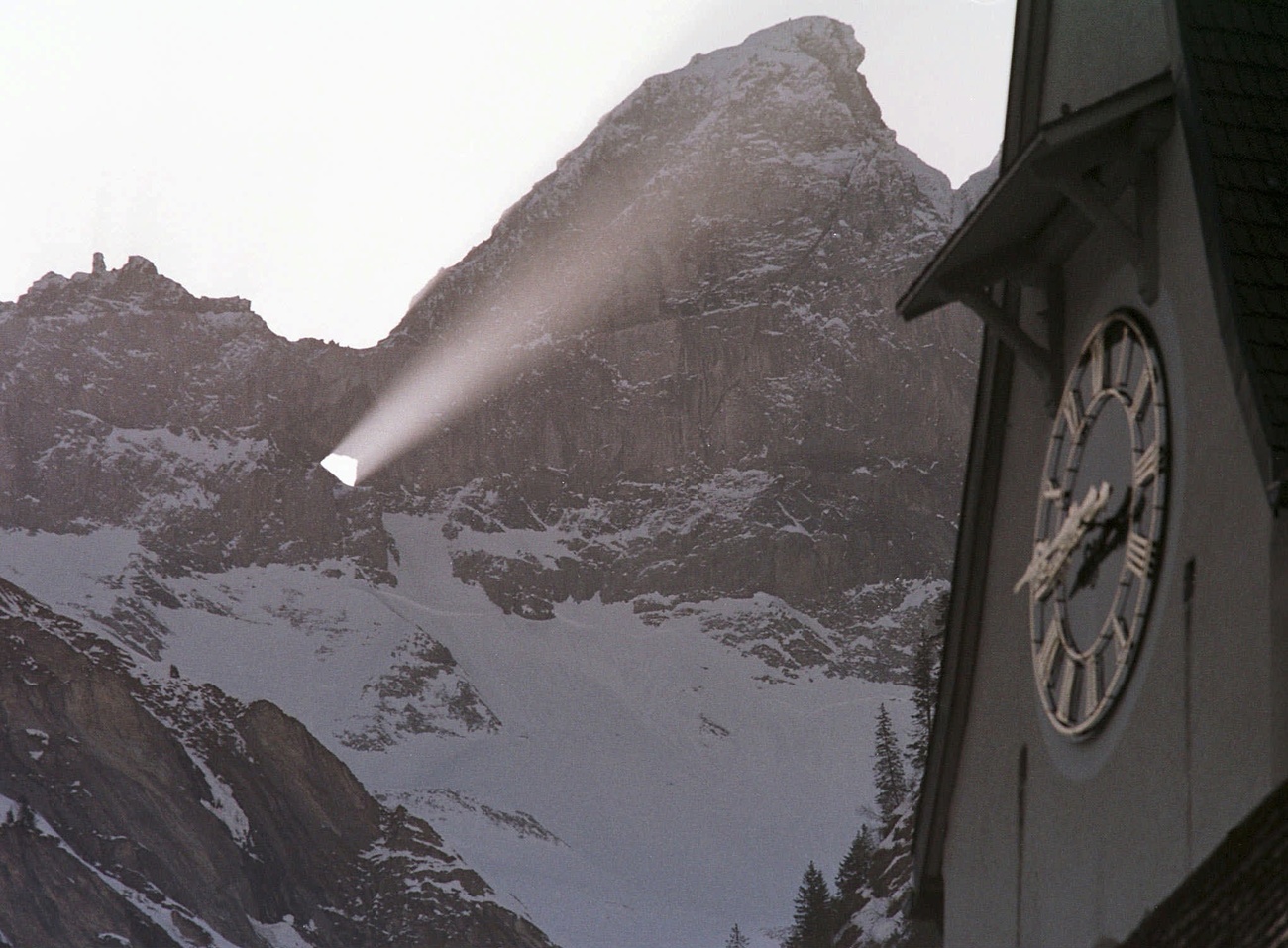
Occasionally the moon and some planets can also be seen through the Martinsloch – an experience that is “no less impressive” than seeing the sun, stresses Elm tourismExternal link. The next lunar event in the Martinsloch is on October 5, when a full moon will shine directly onto the church spire.
What’s more, every 19 yearsExternal link the sun and full moon shine through the Martinsloch on the same day. Put September 2039 in your diary.
Altercation with a giant
But what are the origins of the Martinsloch? According to legendExternal link – the best-known legend, anyway – a shepherd, Martin, was tending to his animals on the Elm side of the mountain.
“One day, a giant from Flims attacked his flock and tried to steal some of his sheep,” a Flims tourism site explainsExternal link. “However, Martin defended his animals valiantly and the giant fled. Martin hurled his crook after the giant, but it missed and struck the Tschingelhörner. A mighty roar and clatter rang out, and a vast sea of rocks crashed down to the valley. Once the dust had settled and calm was restored, a triangular-shaped hole could be seen in the rock face – henceforth to be known as the Martinsloch.”
According to geologistsExternal link, “two weak zones intersect in Martinsloch: a dark band of flysch rock that is susceptible to erosion and a fissure in the limestone. This allowed the rock in this area to be eroded more quickly, creating the Martinsloch”.
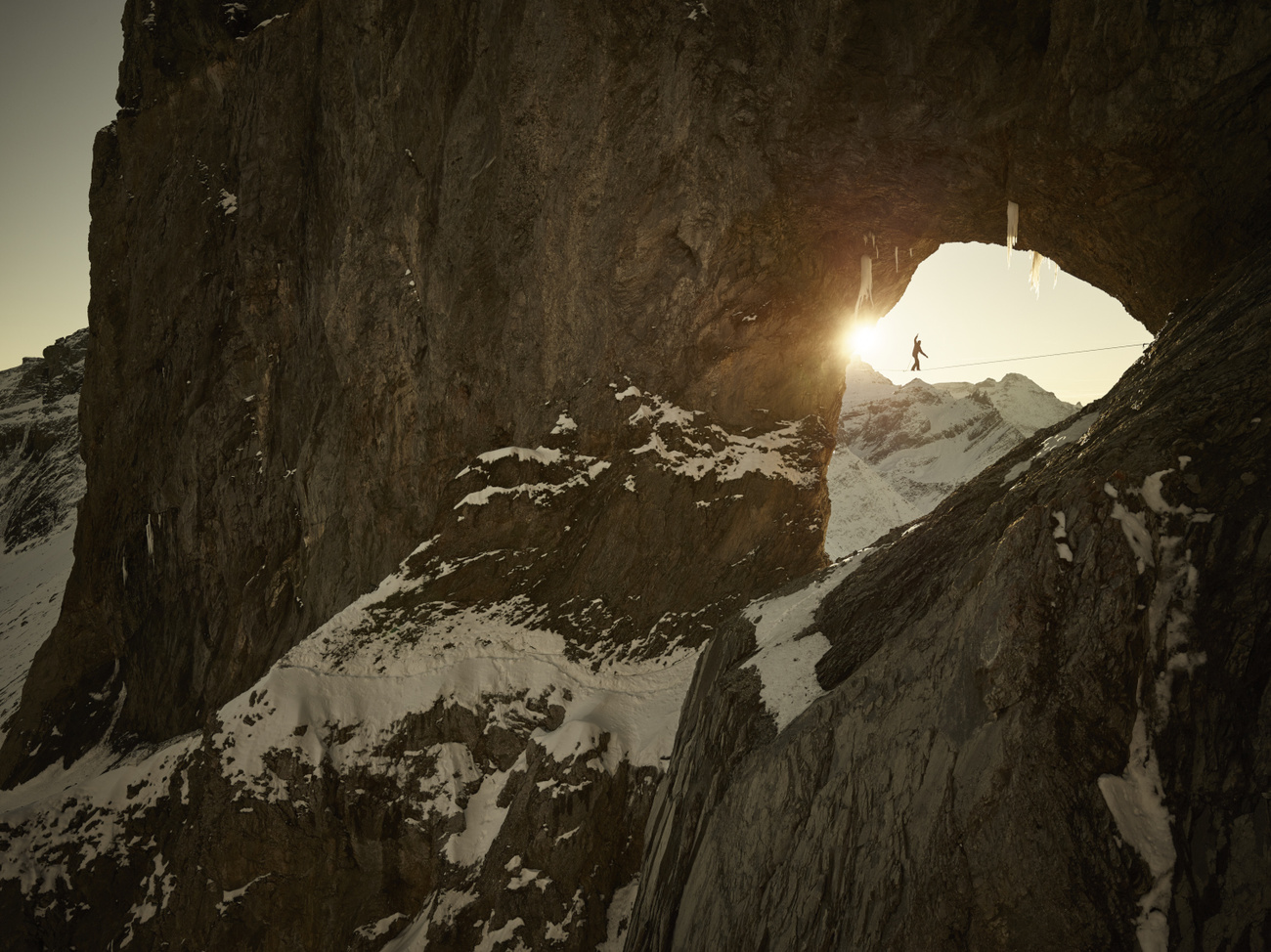
Crumbling Alps
But could erosion result in the end of the window? Last October Elm local Hans Rhyner took a break during the cheese market and looked up at the Tschingelhörner. He thought it looked different, so he asked others, and they agreed with him. “The horn is no longer as it was,” he said.
It turned out that three days earlier, on the morning of October 3, an earthquake of magnitude 2.2 had triggered a rockfall, sending some 100,000 cubic metres of rockExternal link down the mountain. “This is definitely one of the biggest rockfalls in recent years – a huge event,” Thomas Buckingham, a geologist at the Tectonic Arena Sardona, told Swiss public television, SRFExternal link.
>> This animation from the Tectonic Arena Sardona shows how the rockslide could have happened:
It was a close call. The area diagonally above the Martinsloch on the Tschingelhörner has been known for years for its high rockfall activity. So is the Martinsloch in existential danger? Not according to Buckingham, who explained that the rock that had fallen was of a completely different nature to the areas around the Martinsloch.
Reaction to the rockfall ranged from the happy to the sardonic to the philosophical. “Good news at last – that’s how you keep all the TikTokkers off the mountain,” one reader told 20MinutenExternal link. “Never wanted to go there anyway. If I want to see holes, I look at my socks,” said another.
A third concluded that “the Martinsloch was created by geological faults and will disappear again in the same way – that’s nature”.
Edited by Samuel Jaberg/ds
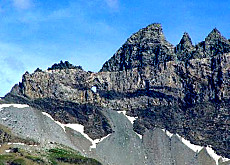
More
Unesco assesses geological ‘shrine’
More

In compliance with the JTI standards
More: SWI swissinfo.ch certified by the Journalism Trust Initiative



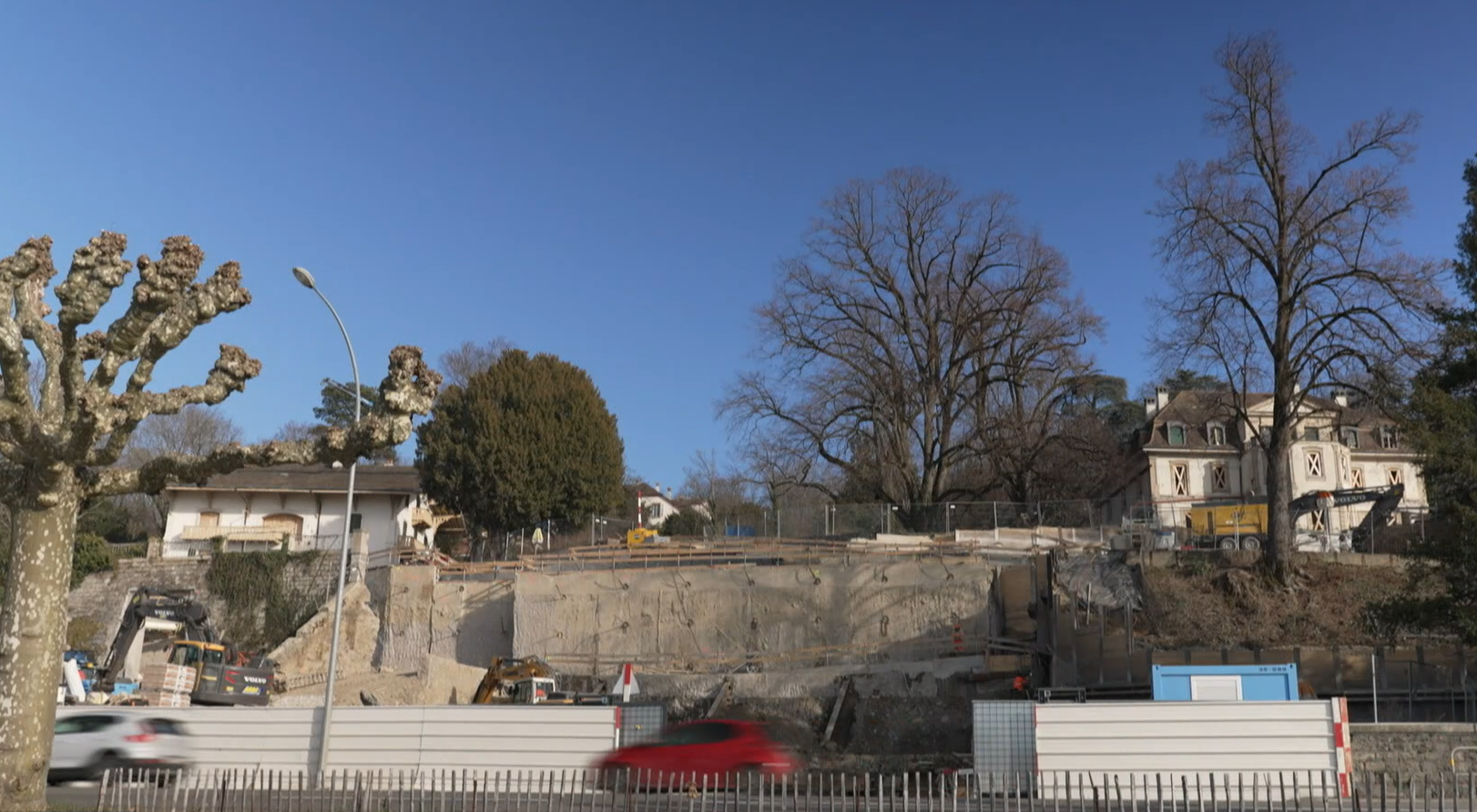


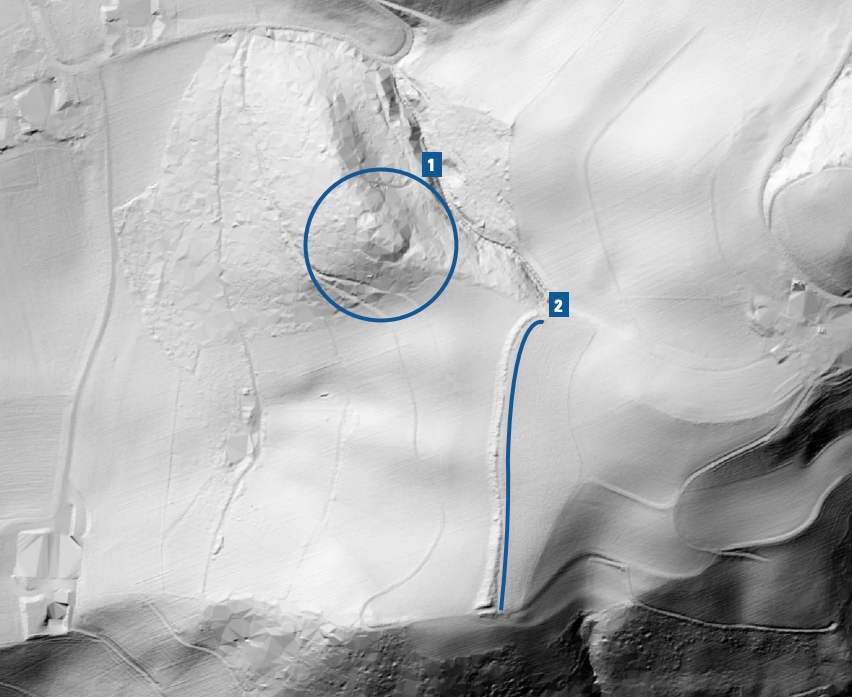


You can find an overview of ongoing debates with our journalists here . Please join us!
If you want to start a conversation about a topic raised in this article or want to report factual errors, email us at english@swissinfo.ch.